|
Comme vous l’avez peut-être remarqué, je vous propose de plus en plus de recettes vegan. Cela fait un moment que l’alimentation « santé » me passionne, etje suis aussi de plus en plus sensible aux effets de l’alimentation sur notre environnement et sur les animaux. Avant de consommer quoique ce soit, j’ai maintenant le réflexe de me demander comment ce que je m'apprête à manger est arrivé dans mon assiette et à quel prix. Comme vous le savez peut-être aussi, un des piliers de la philosophie du yoga est Ahimsa, la non-violence, ce qui explique les recommandations vers une alimentation végétarienne lorsque l’on souhaite vivre selon les principes yogiques. Jusque-là, je ne voyais pas de mal à continuer à manger des produits laitiers sans comprendre la « cruauté » y étant associée. Et puis, je suis tombée par hasard sur la photo d’une vache inséminée à la main avec la mention suivante « Milk & Cheese – products of rape. If you drink milk and eat cheese, then you are paying for this* » qui m’a ouvert les yeux sur la violence que subissent les vaches (ainsi que les chèvres et les brebis j’imagine) pour produire encore et toujours plus de lait, simplement pour assouvir notre appétence pour les produits laitiers. Là-dessus, cet été, je me suis retrouvée dans un alpage de Beaufort lors d’une randonnée en Vanoise. Contente de pouvoir acheter du fromage fait avec du lait de vaches vivant dans les montagnes, passant leur journée à ruminer de la bonne herbe fraiche, j’ai posé naïvement la question suivante: « Comment ça se passe pour la fabrication du fromage, vous prélevez le lait qu’il reste une fois que les veaux ont tété ? ». Ce à quoi on m’a répondu avec un petit sourire désolé « Et non Madame, l’industrie laitière n'est pas une industrie tendre vous savez. Nous gardons seulement 2 ou 3 veaux par an pour remplacer les vieilles vaches, les autres sont envoyés dans des élevages ou à l’abattoir ». Inutile de dire que j’étais sans voix. Quand on remet les choses dans le contexte, cela fait réfléchir non ? La fonction première du lait n'est-elle pas de nourrir le veau? Comment comparer les produits laitiers d’hier et d’aujourd’hui? Remontons un peu dans le temps, ne serait-ce qu'à l’époque de nos grands-parents. A l’époque, on consommait des produits laitiers issus de la ou des vache(s) élevée(s) au grand air dans la ferme familiale, naturellement engrossée par un taureau, quand les pratiques actuelles sont artificielles et impliquent la séparation d’une mère (une vache, mais une mère) et son enfant qu’elle a porté pendant 9 mois. Ce que je viens de vous décrire ne sont que d'infimes exemples de la violence infligée aux animaux, j'en ai peur.** Tout cela devient de plus en plus dur à avaler, d'autant plus lorsque je le mets en lumière par l’Ayurveda, médecine préventive et science de la vie, intrinsèquement liée au yoga. L’Ayurveda parle en effet de l’importance de la charge vibratoire et énergétique de notre alimentation. Sans entrez dans trop de détails, certains aliments vont apporter de l’équilibre, de la légèreté, de la clarté (essentiellement tous les fruits et légumes frais et secs), d’autres vont apporter de l’agitation, de l’excitation (tous les stimulants type café, cacao, les sucres raffinés, les plats épicés, l’ail, l’oignon), ou encore de l’inertie, de la lourdeur (la viande, les aliments transformés, périmés…). Certes, l'Ayurveda traditionnelle (qui date de plus de 3000 ans) recommande la consommation de certains produits laitiers, tels que le ghee (beurre clarifé), mais elle ne cautionne en aucun cas la violence du contexte actuel (les vaches sont considérées comme sacrées en Inde, comme vous le savez surement). L’Ayurvéda va jusqu’à dire que l’état d’esprit dans lequel se trouve une personne qui prépare un repas va imprégner la charge vibratoire du mets cuisiné. On se nourrit donc de beaucoup plus que de protéines, de lipides et de glucides, et je suis de plus en plus convaincue qu’une alimentation issue d’un environnement respectueux au sens large n’aura pas le même effet sur notre santé physique, mentale, émotionnelle et morale qu’une alimentation issue de pratiques inhumaines. Sur ces entrefaites, j’ai eu envie de vous partager les grandes lignes d’une interview en anglais entre Rachel Brathen (plus connue sous le nom de Yoga Girl, célébrité du yoga sur les réseaux sociaux) et James Aspey, (activiste vegan australien), qui discutent des 10 bonnes raisons d’adopter une alimentation vegan :
Comme vous pouvez le constater, les raisons sont multiples pour considérer le veganisme. Sur les 10, peut-être que quelques-unes vous auront parlé, peut-être une seule, peut-être aucune... Quoi qu'il en soit, l’idée n’est pas (forcément) de changer du tout au tout du jour au lendemain, de jeter par-dessus l’épaule des siècles d’héritage culturel culinaire en se collant une étiquette sur le front. Mon article n’a pas pour vocation de convaincre mais plutôt de présenter, de proposer à tout un chacun de questionner ses habitudes alimentaires, sans (forcément) faire de grandes déclarations du style "plus jamais...", mais plutôt "Et si j'essayais différemment aujourd'hui?". Mon souhait est aussi et surtout d'encourager une consommation réfléchie, informée, renseignée et en conscience. Devenez curieux des étapes qui ont permis d’amener ce que vous vous apprêtez à manger à votre assiette, en vous souvenant que, selon l'Ayurveda, vous vous nourrissez aussi de "cela". J'ai profité de l'occasion pour vous traduire 3 recettes partagées recemment par Rachel: - Yoga Girl's Vegan Pancakes - Yoga Girl's Banana Bread - Yoga Girl's Vegan Chili * Le lait et le fromage sont le fruit d’un viol. Si vous buvez du lait et mangez du fromage, vous payez pour ça: ** Si vous voulez plus de détails sur ce qui se passe réellement dans l’industrie de la viande et des produits laitiers, leur impact sur l'environnement et les droits de l'homme, regardez Dominion, Cowspiracy, Forks over knives, What the health, Food Inc. Rachel et James parle en détail de tous ces sujet dans un podcast (en anglais) que vous pouvez écouter ici - Peace, Love and Veganism (ou sur iTunes - From the heart, Conversation with Yoga Girl) 10 reasons to consider veganism, inspired by Yoga Girl and James Aspey You might have noticed that I’ve been sharing more and more vegan recipes lately. I have embraced healthy eating for the last few years mostly for health reasons, but I’m more and more sensitive to the impact of our diet onto the environment and animals. Nowadays, I can’t help but wonder how my food got to my plate and at what price. As you might know, one of the pillars of the philosophy of yoga is Ahimsa. Also known as Non-Violence. It is the reason why most people who want to live according to yogic principles choose to become vegetarians. Until recently, I couldn’t see the problem with consuming dairy, since I didn’t know the cruelty to goes on behind closed doors of factory farming. But sometimes over the summer, while scrolling through my Instagram feed, I saw a picture that gave me chills. It was showing a man shoving his hand down a cow’s vagina to artificially inseminate it. And it came with the following tagline “Milk & Cheese – products of rape. If you drink milk and eat cheese, then you are paying for this.”* It was such an eye opener, realizing what cows (and I’m guessing goats and sheep as well) have to endure for the sake of producing more and more milk for our own appetence for dairy products. Fast forward a few weeks later, and I found myself on a hike in the Alps that took us to a cheese farm. Happy to finally be able to buy products from happy cows, born and bred in the mountains, ruminating on fresh grass all day long, I casually asked “So, how does the cheese making process go? Do you take the left over milk once the calves are done feeding?” To which I heard “Hmmm, not exactly Madam. The dairy industry is not as gentle as you seem to think. We only keep 2 to 3 calves a year, to replace the older cows. The other ones are sent to different farming facilities or to slaughterhouses.” Needless to say I was shocked. Does any of this make any sense to you? Isn’t the primary function of milk to feed calves? Also, dairy from way back had nothing to do with what we call dairy nowadays. Back when our grand-parents grew up, they were consuming milk from the cow(s) of the family farm, naturally engrossed by a bull. How can we compare that what we're eating today, knowing the practices I just touched on? At what point did separating a mother (a cow, but a mother too) from the baby she bore for 9 months became ok? All of this is getting harder and harder for me to swallow, especially when I look at it through the lens of Ayurveda, the sister science of yoga, promoting life and self-healing. Ayurveda believes in the energetic impact of the food we eat onto our health. Without going into too many details, Ayurveda sorts food in 3 different categories: Sattvic food like fruits and vegetable (bringing balance, lightness, clarity), Rajasic food such as coffee, cacao, refined sugar, spicy food, garlic, onions (known to come along with agitation and jitters) and Tamasic food such as meat, processed foods, stale foods (leaving us feeling heavy and lethargic ). Even though this 3000+-year-old science actually promotes consumption of certain dairy products (like ghee), it certainly doesn’t endorse violence (cows are actually sacred in India, as you may know). Ayurveda actually believes that the emotional state of a person who’s cooking will infuse the vibration of the dish. What does it mean? That we feed ourselves way more than just proteins, fats and carbs, and I am convinced that eating food that come from respectful sources doesn’t impact our physical, mental, emotional and moral health in the same way food causing inhuman harm do.
Fast forward another few weeks and I found myself watching Rachel Brathen (also known as Yoga Girl) and James Aspey (vegan activist from Australia) sharing 10 reasons to go vegan. I felt called to translate the main points of the video to my French-speaking audience and I strongly suggest you watch it (here) if you want more details:
As you can tell, there are many reasons to consider veganism. Maybe a few resonated with you, maybe only one did, maybe none… Whatever it is, keep in mind that the idea is not (necessarily) to change everything cold turkey, to throw your culinary cultural background out the window and stick a label on your forehead. My intention, when sharing about veganism here or on social media, is never to convince anyone but rather to encourage everyone to question their eating habits without (necessarily) say “Never again” but rather “What if I tried something different today”. My wish is to make sure we all understand what we endorse with our thoughts, our words, our actions and our dollars/euros and start bringing consciousness into what we choose to feed ourselves. Try to question what went on for your food to get to your plate, and remember that, according to Ayurveda, you’re are feeding yourself “that” too. *If you want more information about the meat and dairy industry as far as animals, environment and human rights are concerned, watch Dominion, Cowspiracy, Forks over knives, What the health, Food Inc. Rachel et James also have a great podcast diving deep into the topic of veganism that you can listen to here - Peace, Love and Veganism (or on iTunes - From the heart, Conversation with Yoga Girl)
1 Comment
A week ago, I enjoyed the best honeydew of my life! Strong statement you may say, well let me add that melons are in full bloom right now, and more so, I had not had any solid food in 5 full days. Fasting had been on my radar for a while, reading and researching about it thanks to (among others) Thierry Casasnovas' videos (or Robert Morse's for the non-French speakers), so much so that I really wanted to experience it personally. I ended up convincing my husband that we could dedicate a week of our summer vacation to fasting and randomly found Clemens and Julie from Chemin de la Santé. Fasting is a practice as old as the world, and it can be done in many different ways. I decided to pair it with yoga (of course), as well as hiking in the beautiful mountains of Champagny (Vanoise). Chemin de la Santé follows the Buchinger method, which consists of a water fast, supplemented with fruit/vegetable juice and vegetable stock, to provide with a minimal calorie and mineral intake and counteract the acidification that arises from the detoxification process (that naturally occurs during a fast). So off we went, and for a week, our only job was to consciously put food aside and take everything else in (and let me tell you how much time is freed up when you don't have to think about what to make, what to get at the store and that you don't have to actually cook). Everyday started with a yoga class at 8.15am, followed by some fresh juice. By 10am, we were ready to go on a different gorgeous hike every day, for 3 to 4 hours. This might seem counter-intuitive at first, but moderate exercise is key when fasting, as it helps oxygenate our lungs (one of our emunctory organs to release toxins) and boost our blood and lymph circulation (to help with the detoxification process as well). In the afternoon, we could rest, take advantage of the hamman, sauna, swimming-pool or massages (all excellent means to energize or calm the body down, depending on the need of the day*), gather around a delicious bowl of veggie stock around 6pm and finally end the day with another yoga practice. As you can see, our days were filled with enough other nourishing experiences to easily forget about food. Though, to be 100% honest, I did experience a little bit of hunger almost every night, but as our body gets into fasting mode, the sensation of hunger is known to disappear for most people on day 2 or 3. So why fasting, other than taking some time away from your everyday hustle and bustle? Fasting will release your vital force (known as Prana in Ayurveda), boost your body's natural self-healing power, and give you a sense of physical and mental self-empowerment (and as Bob Marley - whom I consider as a modern yogi - used to say, “you never know how strong you are until being strong is your only choice”). Some people feel much better while fasting, some right after fasting, and some months later, to each his own… But I do believe that fasting (one day or even one meal at a time) is the chance to hit the pause button and an experience we can all benefit from in our go-go-go world. In our society where we always want to reach out, to consume, to take something from the outside to feel better on the inside, we have forgotten that we already have everything we need, if we only give ourselves the time and space to bring ourselves back into balance. * I often woke up tired as a lot of the detoxification happened at night and impaired with sleep, but I can't tell you how much better I felt after a simple yoga class or a massage. Il y a environ une semaine, j’ai mangé le meilleur melon de ma vie. Et oui, rien que ça. Bon ok, on est en pleine saison des melons, mais surtout je n’avais rien mangé depuis 5 jours et mes papilles étaient toutes fraiches et prêtes à réappréhender ces saveurs oubliées. Cela faisait un petit moment que j’entendais parler des vertus du jeune (notamment dans les vidéos de Thierry Casasnovas) et que j’avais envie de faire l’expérience sur une semaine complète. Après avoir convaincu mon mari de me suivre dans l’aventure, nous avons cherché une semaine qui allierait jeune, randonnée et yoga (what else ?) et nous sommes tombés sur le séjour proposé en Vanoise, par Clemens et Julie de Chemin de la Santé, pour notre plus grand bonheur.
Le jeune est une pratique vieille comme le monde et elle peut se pratiquer de mille et une façons. Les séjours de Chemin de la Santé se font selon la méthode Buchinger, qui consiste en un jeune hydrique, auquel on ajoute des jus de fruits et de légumes frais, ainsi que des bouillons afin d’apporter une quantité minimale de calories mais aussi et surtout de minéraux alcalinisants pour aider le corps à faire face à l’acidification naturelle et temporaire causée par la détoxification liée au jeune. Nous voilà donc partis pour une semaine, sans attente particulière, avec pour seul objectif que de mettre la nourriture de côté, nous nourrir autrement et prendre du temps pour nous poser (et je ne vous dis pas le temps qui s’offre à nous lorsque nous n’avons pas à prévoir de déjeuner, de courses ni à préparer de diner !). Chaque jour commençait par une séance de yoga à 8h15, suivi d’un (ou 2) verre(s) de jus. A 10h, nous étions prêts à partir sur des sentiers de randonnées plus pittoresques les uns que les autres, pour une durée de 3 ou 4 heures. Cela peut sembler beaucoup mais il faut savoir qu’un minimum d’exercice est nécessaire pendant le jeune pour favoriser l’oxygénation des poumons (qui font partis des organes émonctoires nous permettant d’évacuer les toxines) et booster la circulation sanguine et lymphatique (pour aider également au processus de remise en circulation et élimination des toxines). La clé étant de ne jamais s’essouffler. L’après-midi était dédié au repos, aux activités telles que le sauna, hammam, piscine et/ou massages, toutes aussi bénéfiques les unes que les autres pour stimuler ou au contraire calmer chacun, selon ses besoins du jour*. Nous finissions la journée réunis autour d’un (ou 2) bol(s) de bouillon puis par une pratique de yoga nocturne. Nos journées étaient donc bien remplies, juste assez pour en oublier la nourriture. Pour être très honnête, j’ai ressenti la faim un petit peu chaque jour, le soir en général, mais la plupart des personnes ne la ressente plus à partir du 2ème ou 3ème jour, lorsque le corps se met en mode « jeune » et va taper dans ses réserves de graisses. Quelles sont donc les vertus tant attendues du jeune, au-delà de celle, non-négligeable, de prendre du temps pour soi ? Le jeune est reconnu (d’après quelques études et de nombreux témoignages issus de cliniques du jeune très présentes dans des pays comme l’Allemagne et la Russie), pour relancer notre force vitale (appelée Prana selon l’Ayurvéda), booster nos capacités à l’auto-guérison, nous renforcer physiquement mais aussi mentalement (car comme disait Bob Marley, yogi des temps modernes « You never know how strong you are until being strong is your only choice // On ne se rend compte de sa force que lorsque la force est notre unique option). Il faut savoir que certains personnes vont sentir un bien-être immédiat pendant le jeune, pour d’autres cette sensation arrivera quelques jours après, pour d’autres quelques mois plus tard… Peu importe, car je suis persuadée que l’on a tous à bénéficier d’un temps de pause dans nos vies trépidantes, tel que le jeune peut nous l’offrir, chacun à son échelle, sur un repas, sur une journée, sur une semaine. Nous avons tellement pris l’habitude de chercher nos réponses, nos solutions, nos remèdes à l’extérieur, que nous avons oublié que tout est là. Qu’il suffit parfois simplement de prendre le temps de s’arrêter un instant pour permettre à notre corps et à notre esprit de retrouver l’équilibre qui leur est propre. *Je me réveillais souvent fatiguée le matin, du fait d'un sommeil agité lié aux nombreux processus de detoxification qui se font la nuit. J'étais impressionée de mon changement d'état, d'humeur et mon niveau de vitalité après un simple cours de yoga ou un massage. Un grand merci aussi à Valérie Piu de Yoga Verdon pour ses cours de qualité et sa présence bienveillante. Ca y est! Juicery Factory, le premier bar à jus de Marseille a ouvert il y a quelques mois, et il est juste à côté de chez moi, quelle chance! Lumineux et chaleureux, il me rappelle les nombreux Juice Bars que je voyais à New York du temps où j'y habitais. Les fondateurs se sont inspirés de cette tendance américaine, et plus spécialement des bars à jus de Floride, et vous en sentirez la cool attitude dès que vous y mettrez les pieds.
Juicery Factory sert une vingtaine de jus pressés à froid, tous faits à partir de produits de saison issus de l'agriculture raisonnée et locale. Chaque recette est travaillée avec une naturopathe et élaborée dans leur Juice Lab, également basé à Marseille. Ce que j'adore, au-delà du fait que leurs jus incluent des fruits et légumes frais, c'est que certains contiennent également des épices (comme de la cannelle), des super aliments (comme des baies de Goji ou de la Spiruline) ou de quoi chouchouter vos intestins comme des probiotiques et du charbon actif. La cerise sur le gâteau? Ils proposent une sélection de jus de saison comme un délicieux mélange d'agrumes et de cannelle l'hiver dernier, ou encore un jus vert à base d'asperges et un crazy latte (lait d'amande) rose aux fraises et à la betterave en ce moment. Donc, que vous ayez envie de vous désaltérer en faisant le plein de vitamines, que vous vouliez vous faire du bien avec une pause déjeuner/gouter saine et gourmande (ils vendent les meilleures chips de kale que j'ai gouté en France !) ou que vous vouliez donner un peu de répits à votre système digestif en vous lançant dans une cure de jus (ils proposent 1, 3 et 5 jours), je suis sure que vous trouverez une bonne raison de passer chez Juicery Factory. Vous en repartirez régénérés et souriant, un peu comme si vous reveniez d'un long weekend au soleil ! ----------------------------------------------------------------------------------------- Finally! Juicery Factory, first stand-alone juice bar in Marseille, opened a few months ago right in my neighborhood, lucky me! Bright and shiny, just like the ones I used to see when strolling down the streets of NYC... The founders did get inspired by the juice bar scene of Florida and you'll surely get that relaxed vibe as soon as you'll walk in. They serve about 20 different cold-pressed juices, all made from organic and local ingredients, and elaborated in a juice lab with the help of a naturopath doctor. What I love about their juices is that, they not only include fresh fruits and vegetables but, some of them also contain spices (like cinnamon), superfoods (like goji berries or spirulina) and even digestive boosters like prebiotics or active charcoal. Cherry on the cake: they rotate seasonal juices. They had a luscious cinnamon citrus blend for winter; and for spring, they came up with an asparagus Green Zest juice as well as a strawberry/beet almond milk Crazy Latte! So whether you're thirsty for some delicious juice, craving a healthy lunch/snack (they sell one of the best kale chips I've had in a while) or in need of putting your digestive system at rest for a few days (they offer 1, 3 or 5 day juice cleanses), you'll surely find a good reason to stop by and leave feeling refreshed as if you had just taken yourself on a mini-vacation! Last week, I got the chance to attend Gilles Lartigot show conference in Aix-en-Provence. Who the hell is GL, you ask? A UFO in the French health and nutrition world, also known as The Heavy Metal Cook. In other words, very different from any conventional nutritionist you may have met before... Original from a village in the South of France, he spent most of his time in North America, where he personally experimented with junk food fully before turning into Health Food Guru. Heavy Metal Musician and Advertising Executive at some point, he's now an independent author, with no ties to any of the food industry giants. He's not afraid of saying what he has to say, pointing fingers and fighting for what he believes in: local, organic, homemade, non-processed food.
His book EAT is based on interviews with unusual professionals in their own field - such as a Biology Research Professor, a Slaughterhouse Spy, a Vegetarian Musician, a Bee Keeper and an Herbalist - all of them sharing light on why today's processed food is making us sicker and sicker and most importantly, what to do about it. He ends the book with his secret ingredients as an iron pumping athlete himself and a nice array of life-energy-bursting recipes, easy to make from the comfort of your home. The book is available both in French and English, so no excuse not to support Gilles, follow this independent activist on social networks and support him spreading his message worldwide. If you ever come to Marseille, don't think that every soap you'll find on a cute market stand is a "Marseille Soap" made in Marseille, cause most likely, it will not... A few days ago, I took a soap-making workshop at the Grande Savonnerie de Marseille and learned a few secrets behind these quintessential goodies from the South of France.
The main one begin that 3 things need to be respected for a soap to be called Marseille Soaps: - Natural ingredients (and only 3 - lye, water and a minimum of 72% olive oil - though palm oil can be used too for its detergent properties) and no added-fragrance nor coloring agents must be added, - Manufacturing process in 4 specific steps, - Location of the production (region of Bouches-du-Rhone in France). On a side note, if you see Sodium Tallowate listed in your soap ingredient list, know that you are washing your face with rendered beef fat, and that it may cause eczema and blackheads. This lovely ingredient is often used in wax paper, crayons, margarines, paints, rubber, lubricants, candles, soaps, lipsticks, shaving creams, other cosmetics, be ware... On the other hands, Marseille Soaps are known to be hypoallergenic, moisturing, disinfectant, biodegradable (in less than 28 days). Much better, no? La Grande Savonnerie - 36 Grand Rue 13002 Marseille I know, it's been a while since I wrote on here... you'll understand in a minute. Let me put it this way: I've been keeping busy with major transitions in the last few months ~ I got married, moved back to my home country after years of gypsy-ing around and perhaps, most importantly, I've been appreciating the biggest change to come so far: motherhood. I'm now settled in my new home, creating life as we speak, building our nest one branch at a time, looking at life with a brand new lens and while I'm getting used to all of this, I decided it was time to start spreading the love again, from Marseille.
The first gem I found and wanted to blog about is the oh-so-cute-lunch-place named Kitch&Bio. Opened over 2 years ago by former architect Marion, you get a nice homey feeling as soon as you walk in. Her sense of style shows in every corner, from the décor to the plates. Her goal being for her customers to leave satisfied and happy, she serves generous vegetarian "plats du jour", all made with fresh, organic, local ingredients delivered daily to her door. As the sweet tooth that I am, I couldn't resist to also try her einkorn-flour-cookies, and yes, they do deserve their title of Best Cookies in Marseille ~ even if that's the only one I've tried so far!
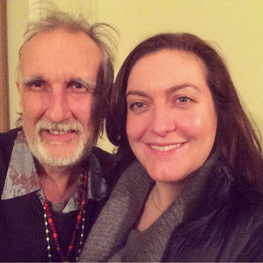 Like many, I've read numerologic predictions in several women magazine and never paid it mind much... Until my good friend Barbara once told me she had an amazing numerologist she swore by. Being curious by nature, I asked for more and next thing I know I was having my first numerology skype session with Julian Michael, which blew-my-mind. It was in 2008, I've been having one every year around my birthday since. Why? Not because I am trying to predict my future but because I gives me tool to better understand every single experience I go through from the bigger scheme of things. Numerology is an ancient science, a secret language, broken down over 500 years B.C by Pythagoras, who said, “Everything in the Universe has number and that number has a meaning.” Julian has the amazing ability to bring light to individual number vibrations, to help realize, transform our own stumbling blocks and to assist in being creative, productive and prosperous . Who wouldn't want that? "It’s time to embrace Numerology as a science. Be empowered. Guided. Directed to be passionate and live your sacred numbers with total awareness." - Julian Michael 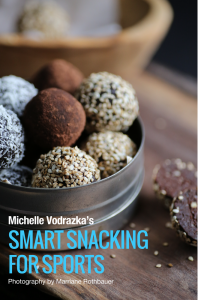 Last fall, while I was learning all about culinary nutrition with the lovely, wise, bubbly and oh-so-knowledgeable Meghan Telpner, I was also introduced to a community of like-minded women (no offense guys, there were just no men attending the program unfortunately), all here to learn how to properly feed and educate themselves, their loved ones and/or their clients. Among them, Michelle Vodrazka, an amazing human being, CEO of 2 companies, certified fitness, yoga, pilates and spinning instructor, certified sports nutritionist and proud mother of 4. Well, I guess Michelle had a little too much time on her hand, so she also decided to become a writer and just launched her book called Smart Snacking for Sports. Being lucky enough to be among the first ones to taste some of her incredibly simple yet deliciously healthy breakfast, energy and recovery drinks, pre- and post-workout snack recipes, I felt the need to spread the word out. Curious? Below is one of her recipe ~ Sunbutter Chocolate Chip Cookies ~ yummo! Convinced? Get the book HERE! Get it before July 13 using this promo code: CNE2013 and you'll save 60% off of the original retail price ~ Sweeeeeeet! Sunbutter Chocolate Chip Cookies Ingredients: • 1 1/2 c old fashioned GF rolled oats • 1/2 tsp baking soda • 1 banana, chopped • 1/4 c natural sunflower seed butter • 2 tbsp coconut oil, melted • 1/4 c brown rice flour • 1/4 c ground palm sugar • 1/4 tsp salt • 1/4 c dairy free chocolate chips Instructions: 1. Preheat oven to 375 degrees F. 2. Place oats and baking soda in a food processor and process until the oats turn into a flour-like consistency. 3. Add the remaining ingredients (except the chocolate chips) to food processor and blend together. 4. Place dough into a large bowl and mix in the chocolate chips by hand. 5. Roll dough into Ping-Pong sized balls, place onto a cookie sheet lined with parchment paper and then flatten slightly with hand or fork. 6. Bake for 12-15 mins. 7. Remove from oven and let cool.  It's only been a couple of months since I was introduced to Vedic Meditation through Emily Fletcher, yet it feels like it's always been part of my life... From the first videos I watched, I resonated so strongly with Emily's words and energy, that I knew I had to take the dive. Within 4 short days, Emily transformed the way I thought and felt about meditation. She made it sound simple, easy and fun (no joke) and gave us the ins and outs about what meditation would bring into our life. It's only been 2 months now but I can already feel major shifts in my relationship to stressful situations, see old patterns fade away and a sense of grounding settle in.... As you know, this blog is NOT a commercial one and I only write about people and initiatives that I experienced for myself and loved so much that I felt called to share them with my community. So I will leave it as is for now, hoping that this post triggered your curiosity enough to want to know more. Emily's next Intro to Meditation Talk in New York will be held on June 10th at 7pm. For those of you who are not in NYC, Emily offers Zivamind, the same teaching from the comfort of your home. And to finish on a powerful note, here is the link to one of my favorite video of hers "The Divinity of Desire ~ What you want is already on the way" because we all need to remember this stuff! |
PerrineYogini at Heart. Archives
September 2018
|

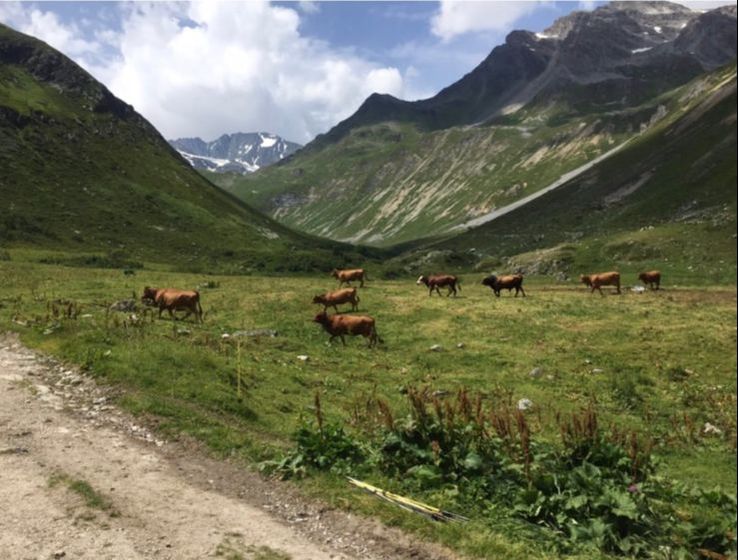
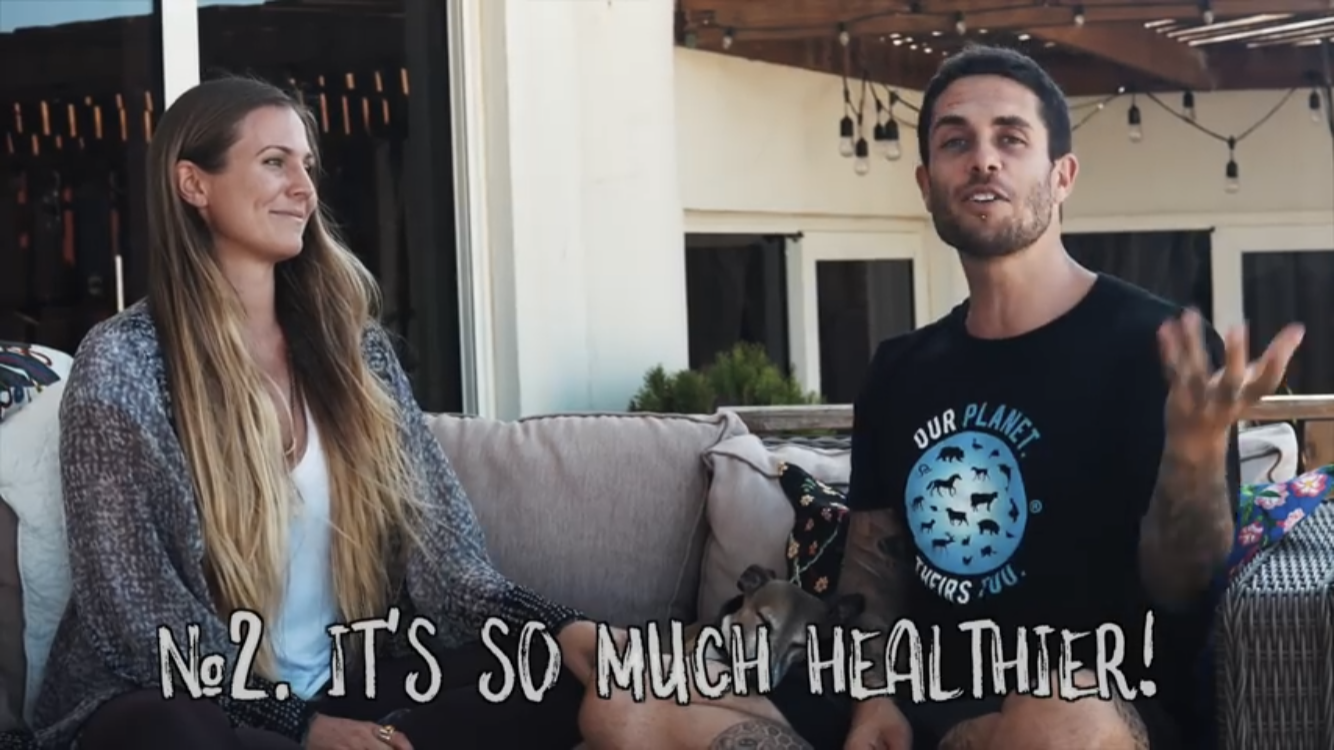
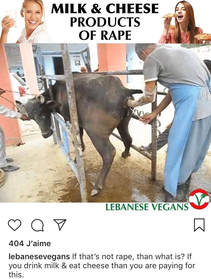
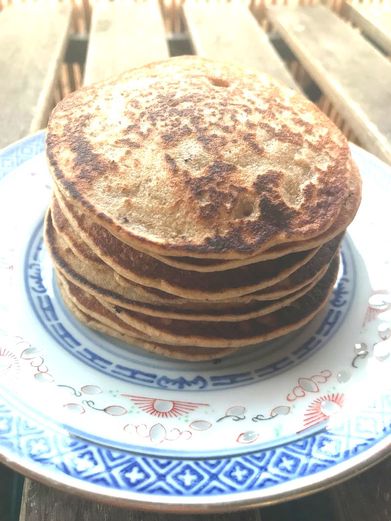
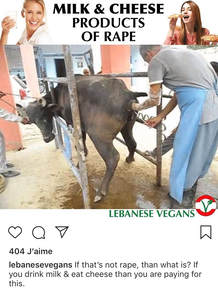
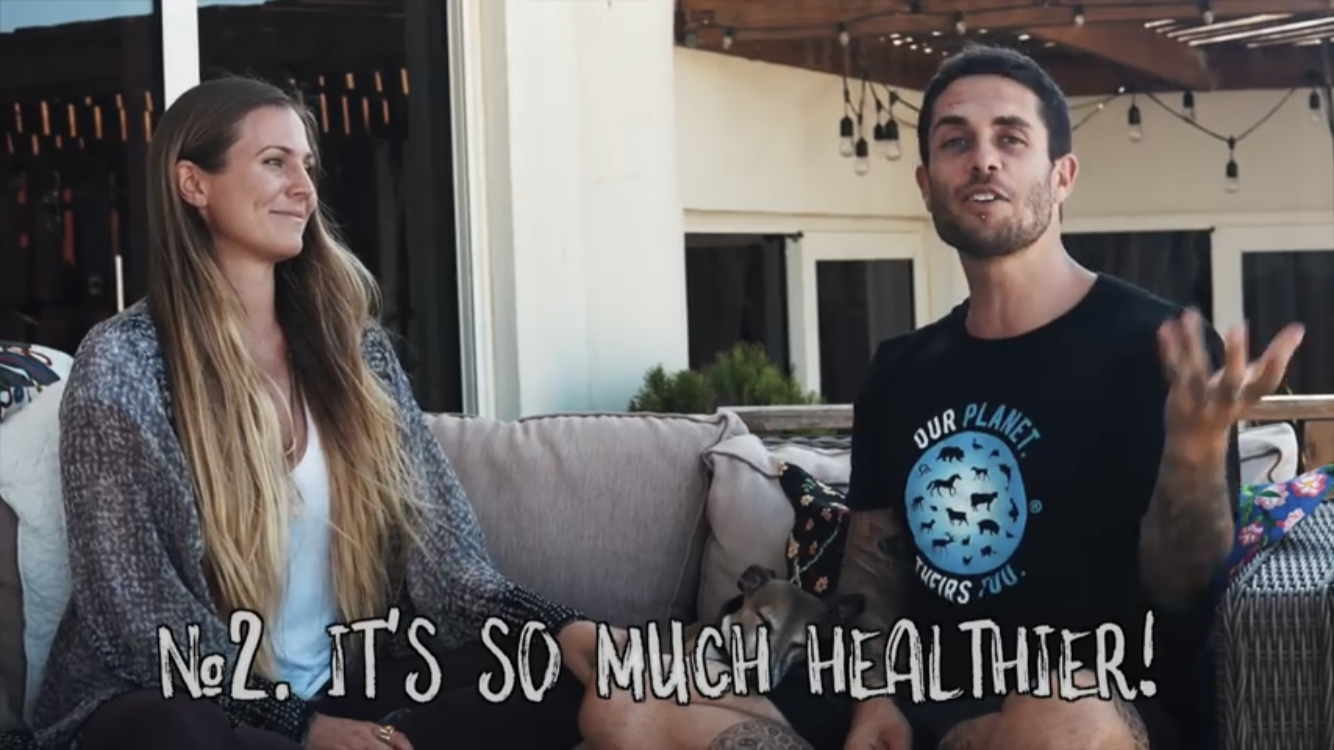
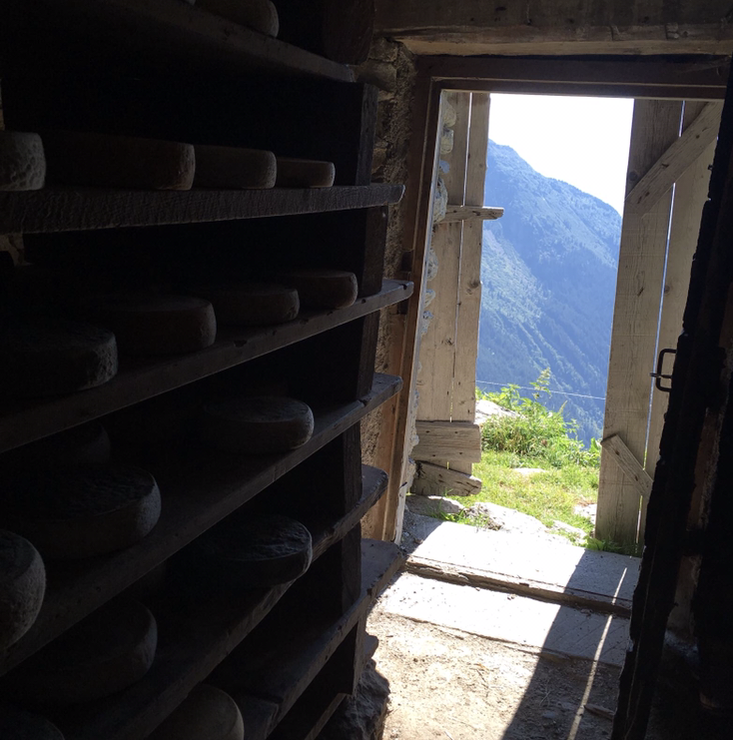
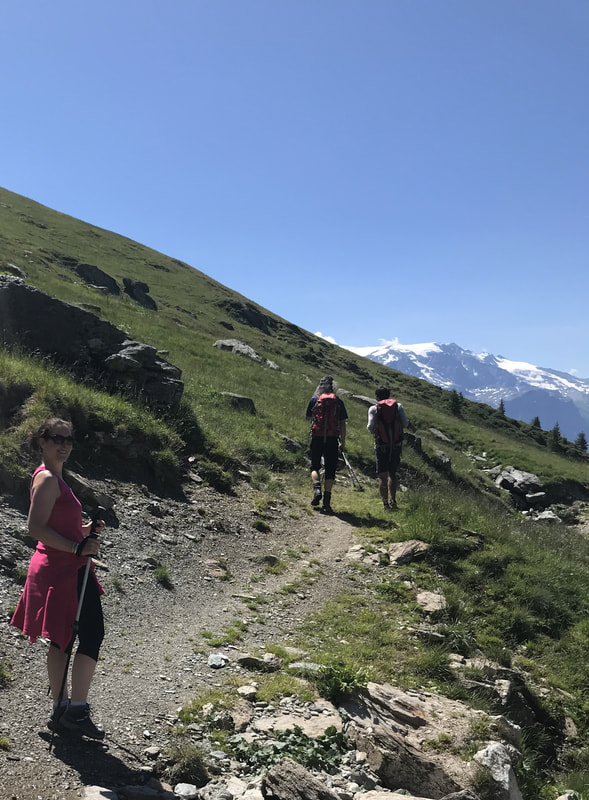
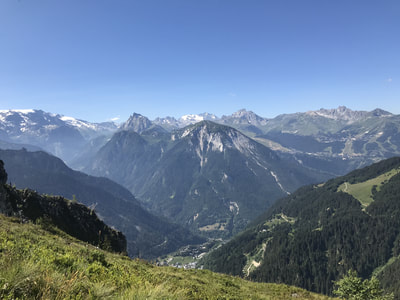
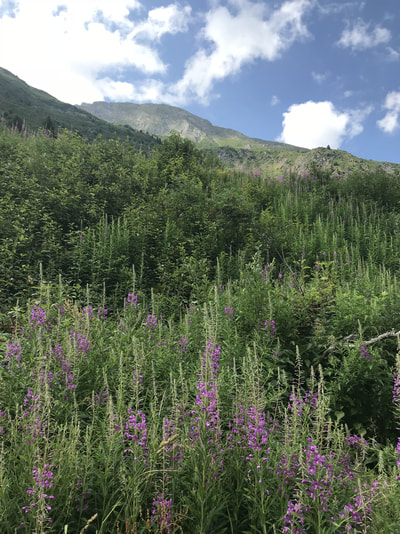
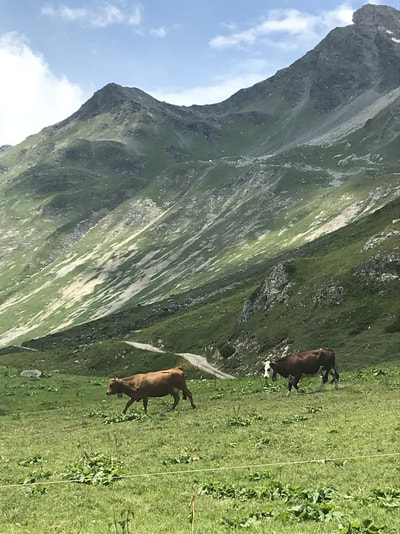
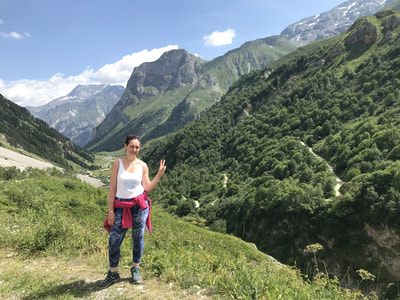
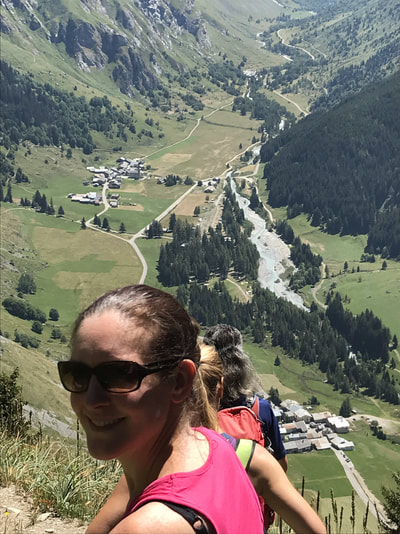
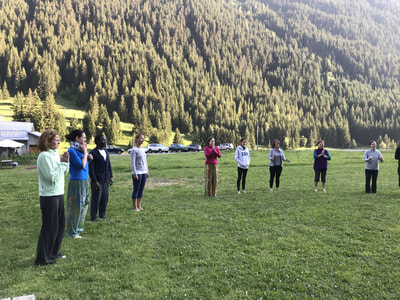
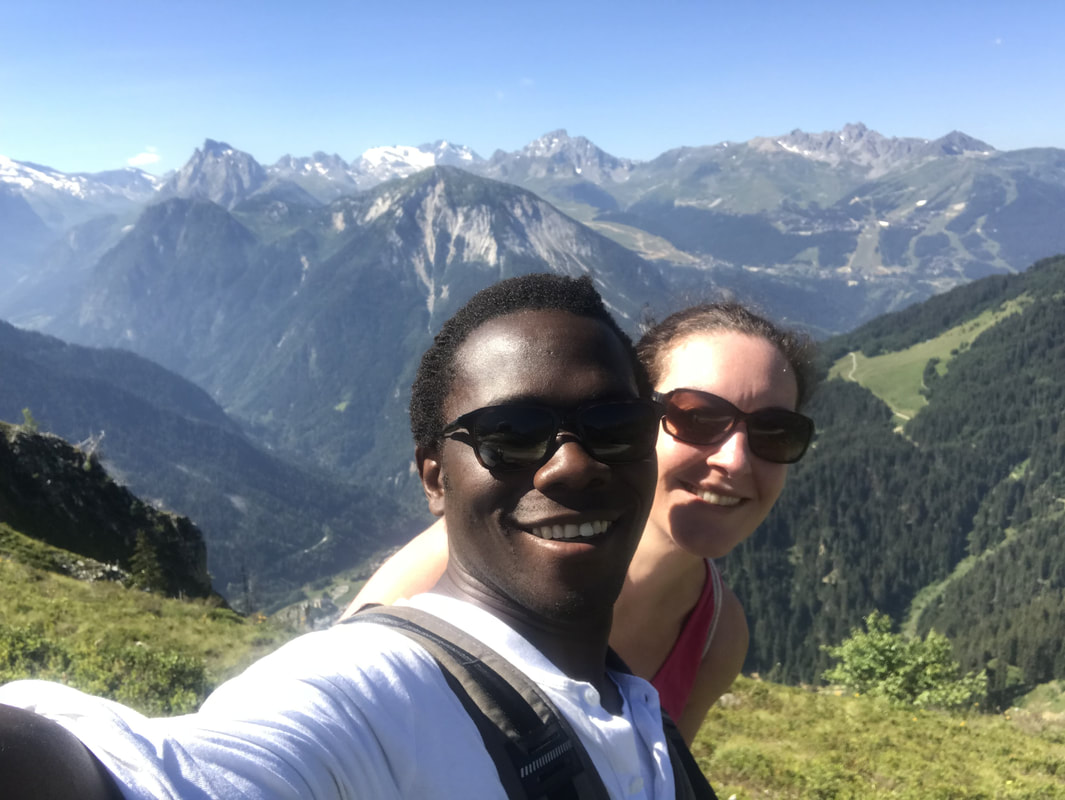
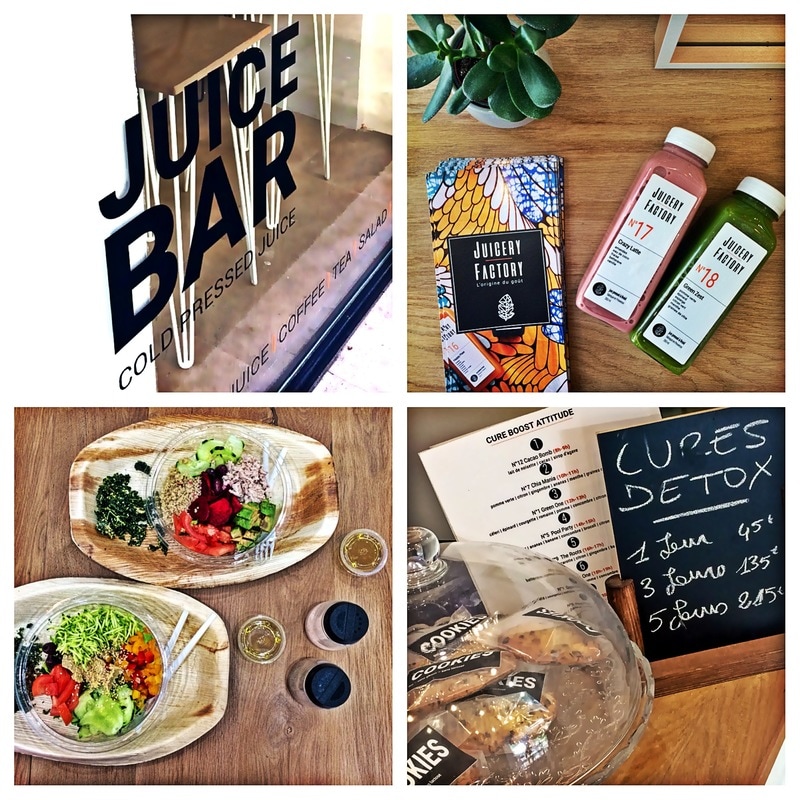
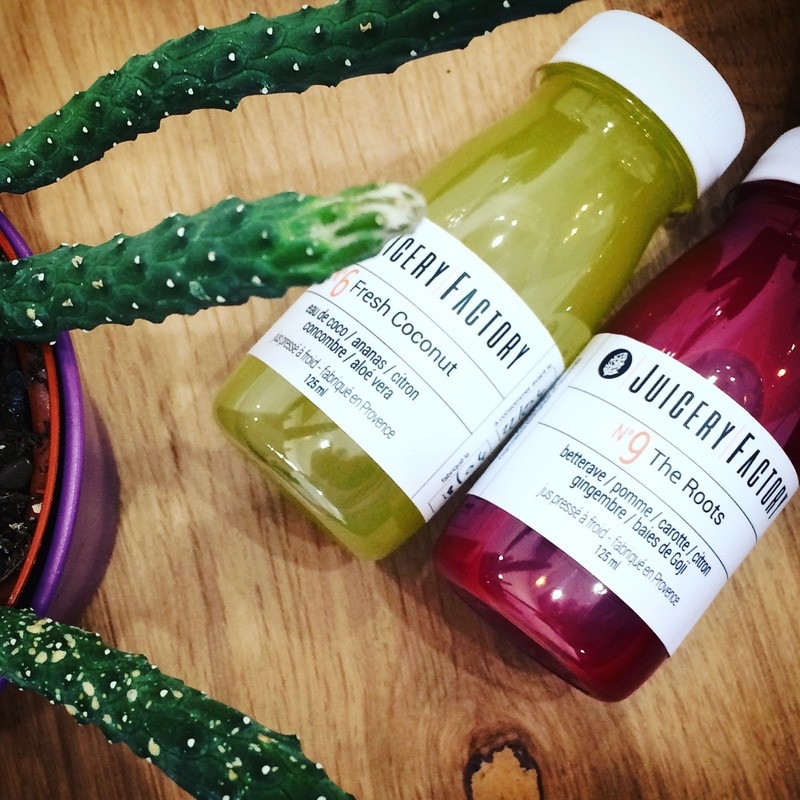
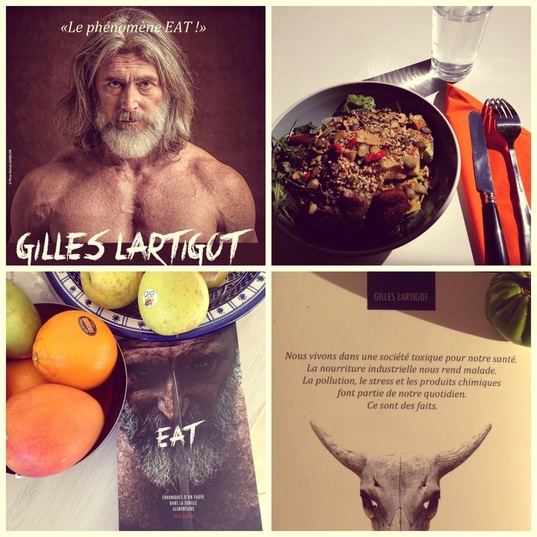
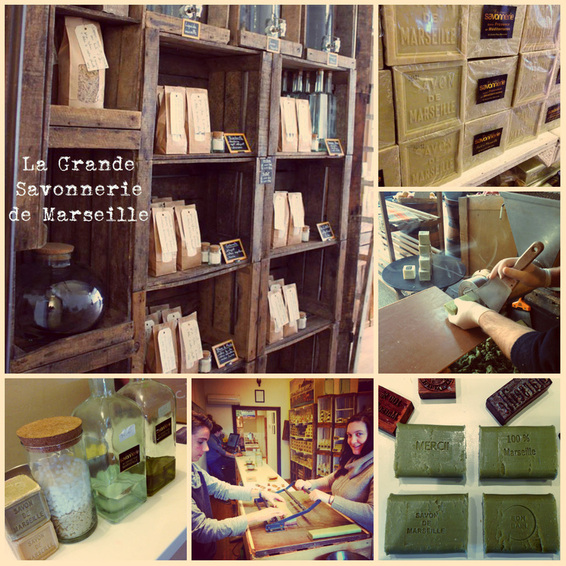
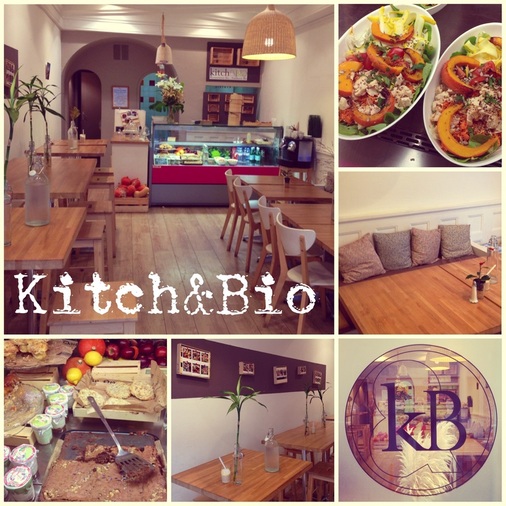

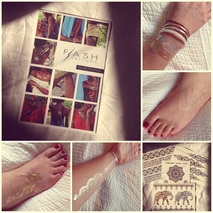
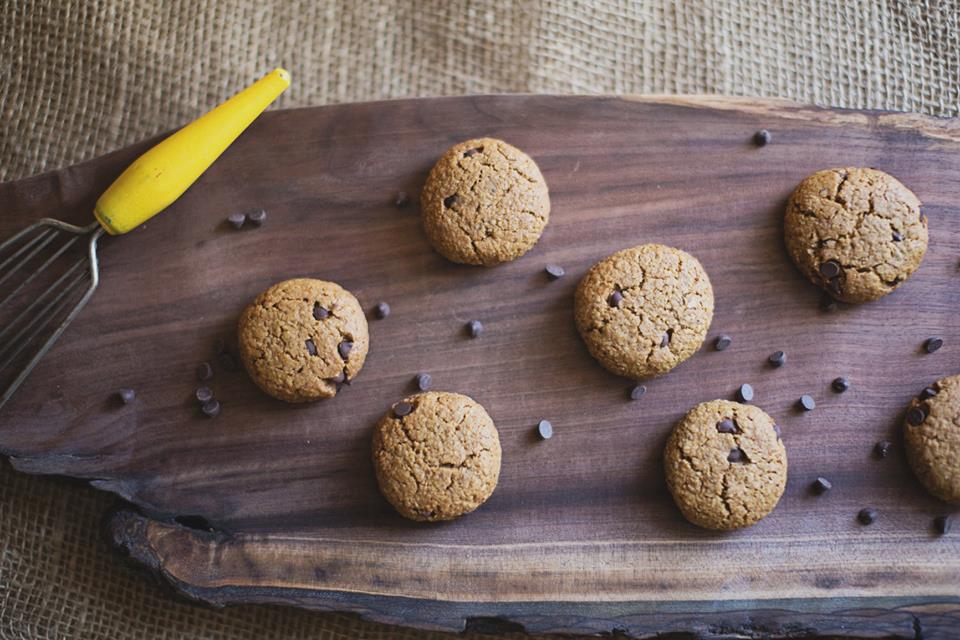
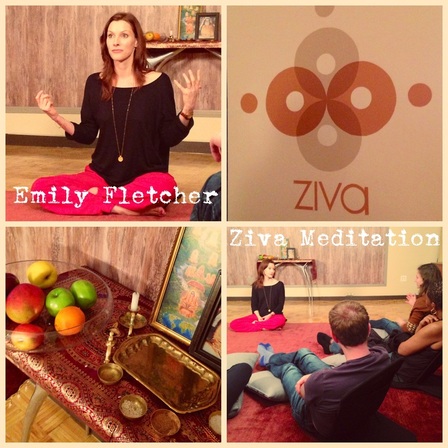
 RSS Feed
RSS Feed